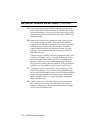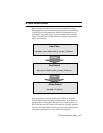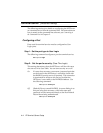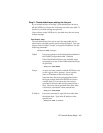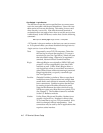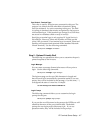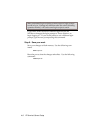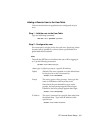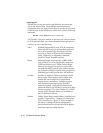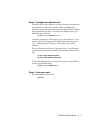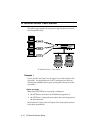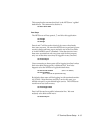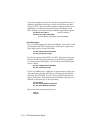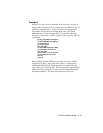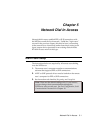4-10 IP Terminal Server Setup
Login Service
The NETServer uses the service specified here to connect the
user to the selected host. Note that the remote terminal or
workstation does not need to know how to use this service since
it talks directly to the NETServer, not the host. Use the following
command:
set user <name> service <service> <TCP port #>
<TCP port#> is the port number on the host you want to connect
to. It is optional unless you choose Netdata as the login service.
<service> is one of the following:
Telnet (Default) Supported by most TCP/IP computers,
Telnet lets the user log in to hosts that support it.
If you set a terminal type for the port the user
connects to, Telnet will pass that information
along. Otherwise, it negotiates a standard,
Network Virtual Terminal interface.
Rlogin Although Rlogin was originally a (BSD) UNIX
only protocol, it is now supported by some non-
UNIX machines as well. Unlike Telnet, Rlogin
allows a user logged into a host, to access their
accounts on other (trusted) hosts without reenter-
ing a password. Rlogin requires that you specify a
terminal type for the port the user will dial into.
PortMux PortMux is similar to Telnet except that it multi-
plexes many Telnet sessions into a single data
stream that’s more efficient to transmit and
requires fewer connections. PortMux requires
that the host be running a special PortMux
daemon (in.pmd). Note that this daemon also
allows the host to use NETServer ports set to Host
Device as pseudo TTYs (See Chapter 7). A UNIX
version of the PortMux daemon is available on
the U.S. Robotics web site.
Netdata Unlike Telnet, Rlogin and PortMux, Netdata is not
actually a login service. Netdata is a direct (clear
TCP) connection to a given TCP port number. 8-
bit data is exchanged without interpretation.
Such connections may be used by dial in applica-
tions that require a socket interface.



